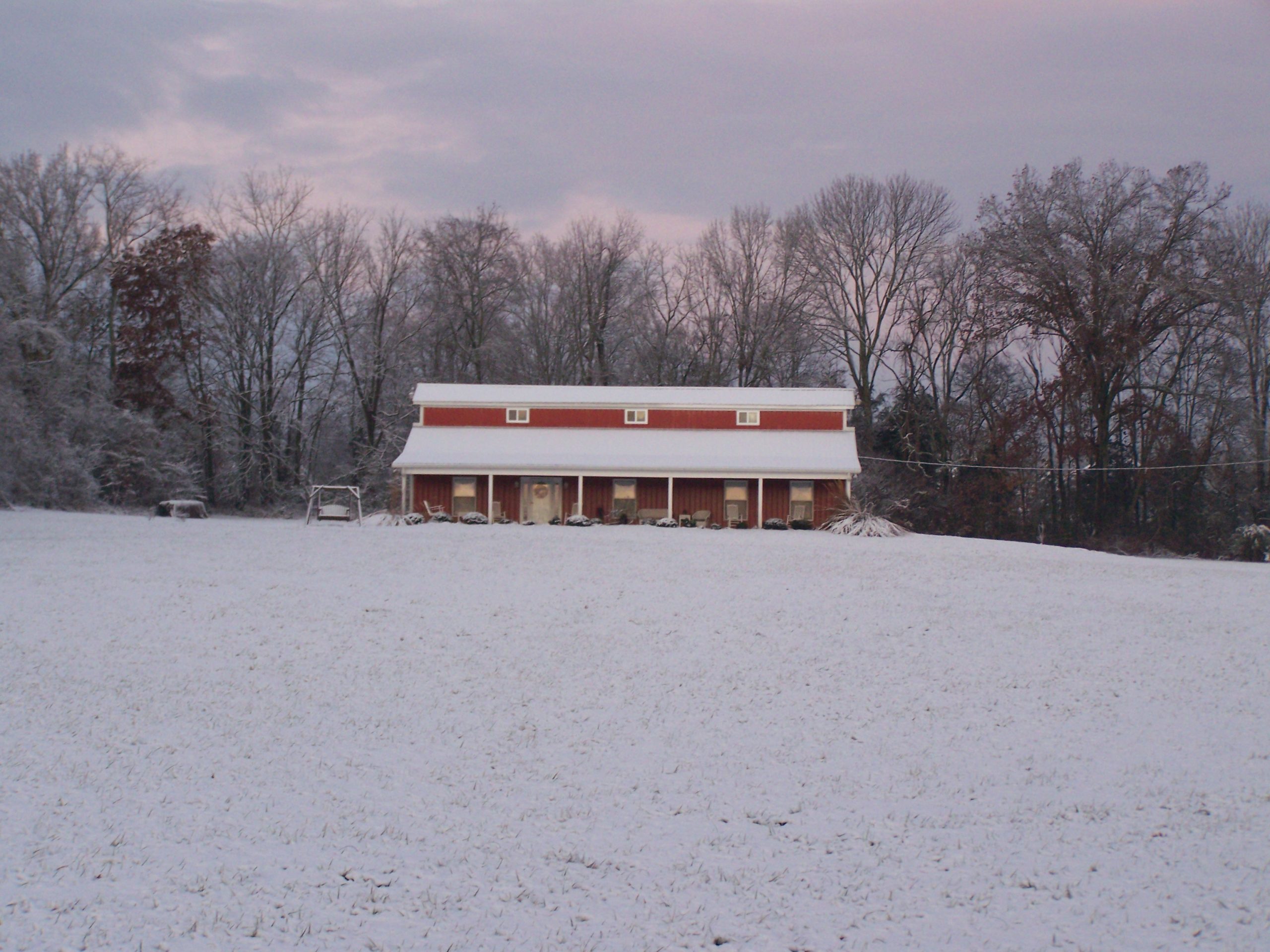This past Monday, we were treated to a dusting of white here in Middle Tennessee, the snow sprinkled across our farm like confectioner’s sugar. It really was a postcard picture moment. In fact, we’re forecast for another dusting of snow tonight!

Even though we’re still in the thick of winter, we are already beginning to make plans for our springtime planting. And yep, we are daydreaming about that first bite of juicy tomato and welcoming back everyone to our annual U-Pick Garden.
But until then… it’s all about the prep.
We wanted to share with you our 5 steps to prep your garden for spring planting!
1. Time to weed.
Weeding… the task we all dread, right?
As you weed, make sure to pull up weeds by the base so that the entire root is excavated. If you only grab the top part of the plant, the root system remains, allowing the weed to taunt you by regrowing.
Using a “stirrup” hoe to slice the soil with small weeds may also speed up your weeding process. This video from The University of Maine explaining how to use this type of hoe. It is named after the horse riding equipment it resembles.
Additionally, wet soil can speed up your weeding process, since roots are easier to pull up from moist soil.
Looking for ways to sustainably prevent weeds this spring & summer season? Check out our blog post offering 4 ideas for preventing weed growth.
2. Grab the pruning shears.
Grab your pruning shears (after sharpening them, of course!) and start snipping away at any shrubs that flower late June through fall. Winter prune-worthy shrubs include abelia, beautyberry, crape myrtle, summersweet, rose-of-sharon, and more.
You should also tip-prune your blackberries and raspberries. This allows the canes to grow more branches, creating a bigger berry bounty come summertime. Use sharp shears to cut back your canes to around 2 feet.
3. Divide overgrown perennials.
Do you have perennial plants that have outgrown their containers or garden bed areas? Right now—before new growth and flowering begins—is the time to do some dividing. Dig ‘em up, divide, plant them in new areas, and water immediately.
If you have more plant than you prefer, share the plant wealth by offering extras to neighbors and friends. Otherwise, to the compost they go!
4. Test your soil.
For annual crops, like vegetables, it’s important to test your soil every spring before planting for the season. This task will need to wait until later in the springtime when it has warmed up a bit.
At Stoney Creek Farm, we do a soil test every spring in early April after we have tilled the cover crop of clover back into the soil. The clover is sown in the fall and then overwinters, providing nitrogen back into the ground in the process. If you have never done a soil test before, it may be a good idea to do one in the fall, as well, to evaluate any amendments needed to build healthier soil as you get ready for spring planting.
Testing your soil is quite simple and can be done through your local Ag Extension. We wrote an entire post explaining how you can test your soil.
You can get your soil test boxes from your local Ag Extension office. You’ll then send your packaged sample back to your local Ag Extension for analysis. In return, you’ll receive a report on your current soil conditions and recommendations for soil amendment.
5. You can’t spell “plant” without “plan.”
Is that plant pun too much?
Regardless, it’s important to make a plan for your garden. While winter continues its cold haunts over most of the U.S., stay cozy inside making a waterproof plan for your spring planting. (No procrastination around here, folks.)
For instance, you should know…
- What will you be growing? When do they need to be planted?
- What plants can—and can’t—grow next to each other? (Find an easy companion planting guide in our e-book.)
- What location will allow each plant type to receive adequate water and sunlight?
- Will you be adding to your garden plants to attract beneficial insects that keep pests at bay?
Once a plan is in place, you can order seeds and other gardening supplies you’ll need. That way, once the final frost has passed for your area, you’re ready to dive into your spring planting tasks.
{Related Reading: When to Plant Seeds for Your Garden & How to Support Germination}
Did you know… ?
Rent a garden plot at Stoney Creek Farm.
If you’re a Middle Tennessee local, we offer garden rentals right here at Stoney Creek Farm.
That’s right… you can save money at the grocery store by growing your own healthy produce, even if you don’t have your own land to do so!
The best part? No tilling required—we take care of that for you! Your garden plot is ready to plant in mid-April after the last frost date.
We want to set you up for success, too. As a garden renter, you’re included in our online Gardening 101 Class. You’ll also receive a personal mentoring Zoom call from us to help you plan your garden design. We’re available to answer any questions you may have throughout the entire growing season!
Pick your plot size here. Don’t wait—our garden rentals sell out quickly every year!


